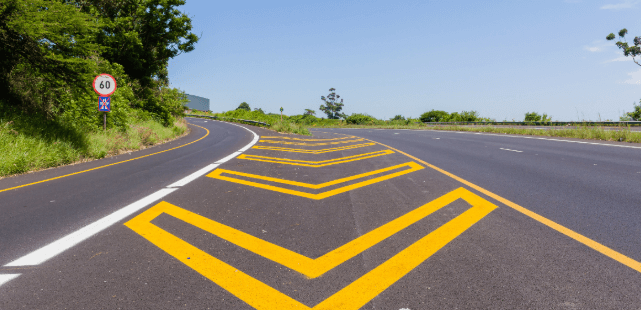How to Make Roads Safer With Road Paints and Markings

Road safety is one of the biggest concerns for modern cities and developing countries. As the number of vehicles increases every year, the possibility of road accidents also increases. While advanced technology, safer vehicles and better road design play an important role, one of the most effective but often overlooked tools for road safety is road paint and road markings.
These simple, colorful lines and symbols on the road guide drivers, control traffic, prevent collisions and help pedestrians walk safely. When used correctly, road markings can reduce confusion, improve traffic flow and significantly reduce accident rates.
This article explains why road paints matter, how they improve safety, the different types of markings, and best practices for their use.
Why do paint and markings on the road matter?
Road signs are essential communication tools for drivers. Even with traffic lights, signs and speed warnings, road signs provide directions in real time to where the driver is looking – to the road ahead.
1. They guide drivers clearly
Lines, arrows, symbols and colors help drivers understand:
- which lane to stay in
- when to stop
- where to turn
- how much distance to keep
- when to slow down or speed up
Without these markings, roads become confusing, especially in busy areas or areas with fast-moving traffic.
2. They Reduce Collision Risks
Clear road markings help prevent:
- Head-on collisions
- Side-swipes
- Wrong-way driving
- Sudden lane changes
For example, a double yellow line signals that overtaking is prohibited for safety reasons. Crossing it endangers both drivers.
3. They Improve Night and Weather Visibility
Modern road paints include reflective glass beads that reflect the light from vehicle headlights. This makes markings visible at night or during rain, fog, or snow — conditions when drivers need guidance the most.
4. They Organize Traffic Efficiently
Road markings help create order and prevent congestion by:
- Separating lanes for smooth flow
- Indicating turning lanes
- Dividing roads for pedestrians and vehicles
- Guiding drivers through intersections
Even during peak traffic, markings ensure predictable behavior.
Types of road signs and their role in safety
Road signs come in different sizes, colors and materials. Each serves a specific purpose to improve road safety.
Longitudinal markings (lines along the road)
These include center lines, lane lines and side lines.
- Center lines
- These divide opposite directions of traffic.
- Broken white/yellow lines: overtaking allowed
- Solid white/yellow lines: Overtaking is not allowed
- Double solid lines: strict no-overtaking zone
- Center lines prevent head-on accidents by keeping vehicles separated.
B. lane lines
Lane lines help drivers stay in their lane and prevent unnecessary swerving.
C. Edge lines
These mark the outer edges of the road. They are particularly helpful:
- at night
- during fog
- For older drivers with poor vision
- They prevent vehicles from leaving the road.
2. Transverse Markings (Lines Across the Road)
These include:
- Stop lines
- Yield lines
- Pedestrian crossings
Each plays a major role in reducing intersection accidents.
a. Stop Lines
Placed before intersections and traffic signals, these lines ensure that vehicles stop at a safe distance.
b. Yield Lines
Triangular markings that warn drivers to slow down and give way to oncoming traffic.
c. Zebra Crossings
These protect pedestrians by signaling drivers to stop and allow people to cross safely.
3. Arrows and Directional Markings
Arrows show drivers:
- Which lane goes straight
- Which lane is for turning
- When a lane ends or merges
Proper arrow markings prevent confusion and last-minute lane changes — one of the most common causes of road accidents.
4. Special-Purpose Markings
These include:
- Bus lanes
- Bicycle lanes
- School zone markings
- Speed bump warnings
- No parking zones
- Disabled parking signs
These ensure the safe movement of pedestrians, cyclists, and public transport.
For example, bright yellow school zone markings slow down traffic and remind drivers to watch for children.
How Road Paints Improve Safety
Road paint is not just about color. Modern road paints are designed with special materials that improve visibility and durability.
1. Reflective Glass Beads
These tiny beads are added to the paint so headlights reflect off them, making markings glow at night.
2. High-Contrast Colors
Bright white and yellow paints help markings stand out in:
- Daylight
- Shade
- Rain
- Dusty weather
3. Anti-Slip Road Paints
Some paints include texture that increases tire grip, especially important in:
- Pedestrian crossings
- Ramps
- Sloped roads
- Wet areas
This reduces the chances of skidding.
4. Thermoplastic Paints
Thermoplastic markings are heated and applied hot. When they cool, they form a thick, durable layer.
They are:
- Long-lasting
- Highly visible
- Resistant to wear
- Cost-effective over time
How Road Markings Can Make Dangerous Roads Safer
Certain roads are more accident-prone due to:
- Sharp turns
- Slopes
- Poor lighting
- High-speed driving
- Heavy traffic
Road markings can significantly reduce risks on such roads.
1. Marking Sharp Curves
Bright edge lines, chevron markings, and reflective paint help drivers see the curve from far away.
2. Marking Slippery Zones
Painting “SLOW,” “SLIPPERY WHEN WET,” or diagonal yellow stripes warns drivers in advance.
3. Highlighting Pedestrian Areas
Near schools, markets, or hospitals, strong markings such as bold zebra crossings protect pedestrians.
4. Preventing Wrong-Way Driving
Arrows and large symbols ensure clarity in multi-lane roads, preventing fatal mistakes.
5. Traffic Calming
Markings such as:
- Speed limit numbers
- Box junctions
- Yellow grids
help control speed and prevent traffic jams.
Best Practices for Designing Safe Road Markings
Creating effective road markings requires proper planning and professional implementation.
1. Use Standardized Colors and Symbols
Drivers should instantly recognize markings. Using global standards helps both locals and international visitors.
2. Ensure High Visibility
Markings must be visible:
- At night
- In rain
- During fog
- Under strong sunlight
Using reflective beads and bright paints ensures clarity.
3. Regular Maintenance
Faded markings are dangerous. They confuse drivers and increase accidents. Roads must be repainted regularly.
4. Avoid Overcrowding the Road With Symbols
Too many markings can confuse drivers. Simplicity is key.
5. Match Markings With Road Environment
Busy roads need stronger markings than slow residential streets.
6. Combine Markings With Signboards
For maximum safety, road signs and markings must work together.
Future of Road Safety With Smart Markings
Road safety is evolving, and so are road markings.
1. LED-Embedded Markings
LED lights built into roads help guide drivers in extreme weather conditions.
2. Solar-Powered Road Studs
These glow at night and outline lanes clearly.
3. Smart Paint That Detects Weather
Some new paints become more reflective during rain or glow in the dark to increase visibility.
4. Thermochromic Paint
Changes color in icy conditions to warn drivers.
These innovations will make roads safer and easier to navigate.
Conclusion
Road paints and markings may look simple, but they are one of the most powerful tools for road safety. They guide drivers, protect pedestrians, reduce accidents, and ensure smooth traffic movement. Whether it is a bright yellow line, a clear zebra crossing, or reflective lane dividers — every marking plays a critical role in saving lives.
As cities grow and traffic increases, investing in high-quality road paints, regular maintenance, and innovative marking technologies is essential. Safer roads begin with clear, consistent, and visible markings. When drivers can see the road clearly, they can follow it safely.




